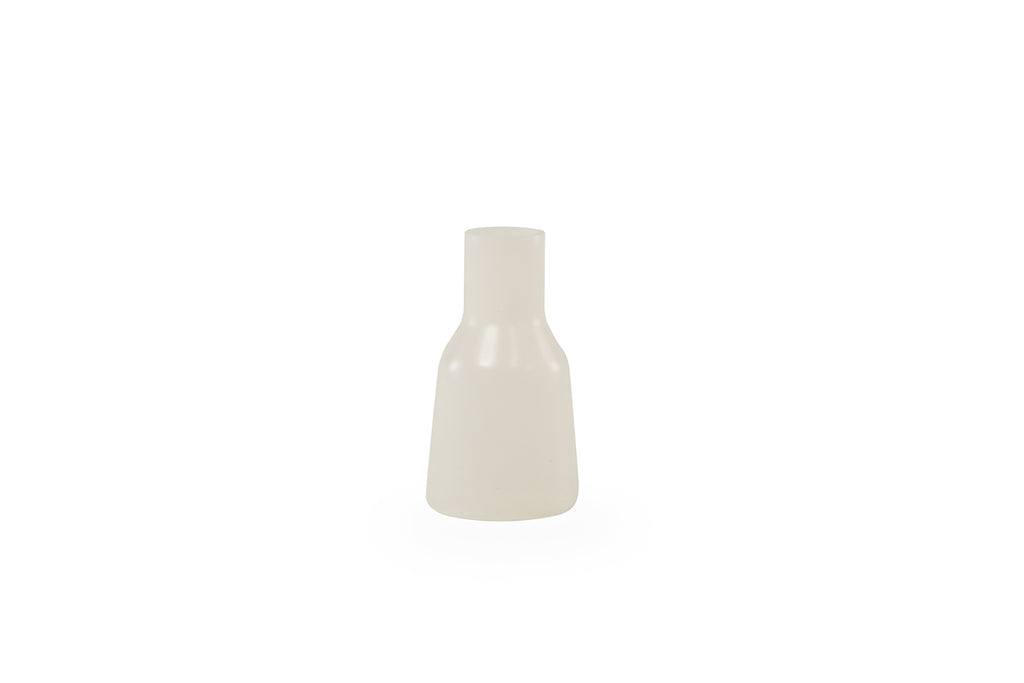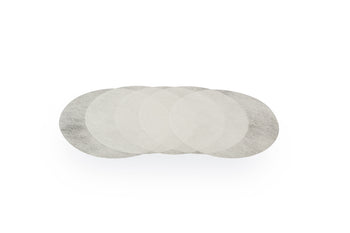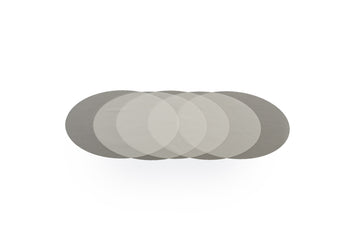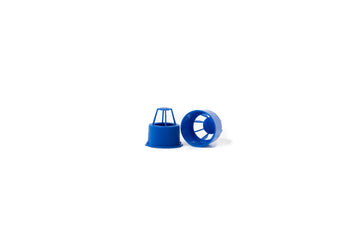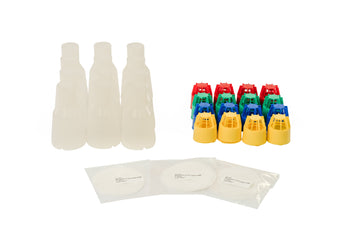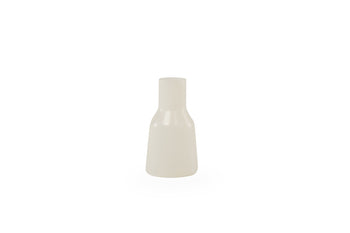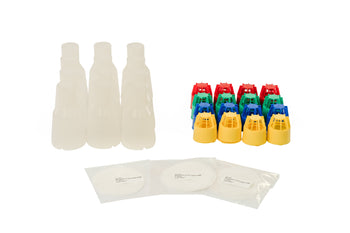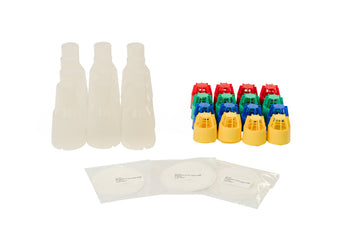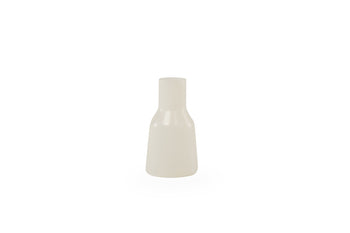
TUNAIR™ Polypropylene Erlenmeyer Flask Systems: Advanced Laboratory Solution
The TUNAIR™ polypropylene Erlenmeyer flask systems are a cutting-edge solution designed for microbiology and biotechnology applications, offering an innovative and patented flask and closure system. These flasks by IBI provide enhanced aeration and mixing capabilities, making them an ideal choice for laboratories that require efficient and reliable culture growth conditions. Specifically designed for researchers and scientists who demand high-quality laboratory equipment, these Erlenmeyer flasks ensure optimal performance and longevity in a variety of experimental settings.
Superior Design and Functionality
The TUNAIR™ polypropylene Erlenmeyer flask systems incorporate a unique design that enhances experimental reproducibility and efficiency. The No-Baffle Shake Flask model features a normal throw, similar to a traditional Erlenmeyer flask, ensuring familiar and predictable performance. With a working volume of 100 ml, this flask provides ample space for cultures while maintaining effective aeration and mixing. The absence of baffles allows for smoother agitation, reducing shear stress on sensitive cultures and promoting better cell growth in suspension. Whether used in research, bioprocessing, or microbial cultivation, these Erlenmeyer flasks provide the reliability and consistency that laboratory professionals demand.
Durable Polypropylene Construction
Manufactured from high-quality polypropylene, the TUNAIR™ Erlenmeyer flask systems are exceptionally durable and resistant to most solvents, making them suitable for a wide range of laboratory applications. Unlike glass alternatives, these polypropylene flasks offer increased impact resistance, reducing the risk of breakage during handling and shaking procedures. Additionally, their chemical-resistant properties make them compatible with various reagents and culture media, ensuring long-term usability without degradation. These Erlenmeyer flasks are designed to withstand rigorous laboratory conditions, providing a cost-effective and reliable alternative to traditional glassware.
Optimized for Microbial and Biotechnological Applications
The TUNAIR™ Erlenmeyer flask systems are specifically engineered for microbiology and biotechnology applications. Their advanced aeration and mixing properties make them ideal for cultivating bacteria, yeast, and other microorganisms in liquid media. The optimized design enhances oxygen transfer rates, improving culture growth and productivity. Researchers working in pharmaceutical development, industrial fermentation, and academic research will benefit from the superior performance these Erlenmeyer flasks offer. With their consistent mixing dynamics and robust construction, these flasks support a broad range of experimental workflows, ensuring accurate and reproducible results.
Easy Cleaning and Maintenance
Maintaining the TUNAIR™ polypropylene Erlenmeyer flask systems is simple and efficient. All flasks can be easily cleaned by soaking them in water with a mild detergent solution, effectively loosening dirt and contaminants. After cleaning, they can be air-dried without the risk of warping or deterioration. Their non-porous polypropylene surface resists staining and microbial adhesion, further facilitating easy maintenance and ensuring a contamination-free laboratory environment. This ease of cleaning makes them an excellent choice for high-throughput laboratories that require quick turnaround times between experiments.
Enhanced Laboratory Efficiency and Performance
The TUNAIR™ polypropylene Erlenmeyer flask systems are designed to improve laboratory efficiency by providing a reliable and high-performing alternative to conventional glass flasks. Their lightweight yet durable construction allows for easy handling and manipulation, reducing strain on researchers conducting repetitive experimental procedures. Additionally, their compatibility with standard shaking incubators ensures seamless integration into existing laboratory workflows. With a focus on efficiency and performance, these Erlenmeyer flasks help researchers streamline their experimental processes and achieve consistent, high-quality results.
Why Choose TUNAIR™ Polypropylene Erlenmeyer Flask Systems?
When selecting laboratory flasks, the TUNAIR™ polypropylene Erlenmeyer flask systems stand out due to their innovative design, durability, and ease of use. Their patented flask and closure system provide superior aeration and mixing capabilities, essential for microbiology and biotechnology research. The No-Baffle Shake Flask model ensures smooth agitation, making it particularly advantageous for sensitive culture applications. Additionally, their high-quality polypropylene construction guarantees long-term durability and solvent resistance, ensuring optimal performance across a variety of experimental conditions. With their easy cleaning and maintenance features, these Erlenmeyer flasks contribute to a more efficient and productive laboratory environment.
A Reliable Solution for Laboratory Needs
For laboratories looking to enhance their microbiology and biotechnology workflows, the TUNAIR™ polypropylene Erlenmeyer flask systems offer an exceptional solution. Their specialized design ensures optimal aeration, mixing, and culture growth, making them a preferred choice among researchers and scientists. Whether used in academic institutions, pharmaceutical development, or industrial bioprocessing, these Erlenmeyer flasks provide the reliability, durability, and ease of use that modern laboratories require. Invest in the TUNAIR™ Erlenmeyer flask systems today and experience the benefits of advanced laboratory technology.
- Specifications
- Accessories
- Technical Information
Flask Dimensions:
Flask Size: 300 ml
Working Volume: 100 ml
Base Diameter: 3.25” [8.25 cm]
Neck Diameter: 1.75” [4.45 cm]
Height: 6.00” [15.24 cm]
Weight: 0.01 lbs. [0.004 Kg]
Mixing:
No-Baffle (0 Baffles): Normal Throws
Shaker Speed:
1” Throws: 300-400 rpm or possibly higher
2” Throws: 150-200 rpm or possibly higher
Material:
All TUNAIR flasks and caps are constructed of chemical resistant polypropylene. All flasks and caps are fully autoclavable.
300 ml flask:
Allows for approx. 150 ml (max) of working volume for culturing cells
2.5 Liter flask:
Allows for approx. 1 liter (max) of working volume for culturing cells
No-Baffle:
The bottom inside of the flask is smooth and flat. This configuration will generate a single vortex within the media inside the flask when fastened to an orbital shaker. The shaker will need to operate at speeds above 160 rpm in order to form that vortex in the media.
Two Piece Cap:
The 300 ml flask and 2.5 L flask both have a special cap and filter system that promotes gas exchange and maintains sterility of the growth culture during use. The inner portion of the cap unsnaps from the outer portion by pushing in the tabs on the side of the cap assembly and then pulling the insert out.
0.2-micron filters:
There are two different types of 0.2-micron filters available for the TUNAIR flasks. These filters allow for maximum gas exchange while maintaining sterility.
Dri-Gauze – This is a paper filter than can be used approx. 6 to 8 times before having to be replaced. This filter can be autoclaved while in the cap, on the flask, for 6 to 8 times.
Silicone – This is a silicone filter that will last the life of the flask. This filter can be autoclaved while in the cap and on the flask for many times.
Cap & Filter assembly:
Once you have the 2-piece cap assembly apart (either the 300 ml cap or the 2.5 L cap) place the corresponding filter size inside the cap and the re-assemble the inner and outer cap pieces making certain to align the tabs with their associated holes. Once clipped into place, make certain the filter completely covers the cap assembly openings.
Attaching the flasks to your shaker:
IBI TUNAIR flasks can be used with nearly all standard shakers and shaker clamps. The 2.5-liter flask typically fits best into the 2-liter shaker clamp. The 300 ml flask typically fits best in the 250 ml shaker clamp.
Preparing and Cleaning the TUNAIR flask:
Your TUNAIR flasks are constructed of polypropylene plastic which allows them to be autoclaved. Once you have prepared your media inside the flask you can place the cap & filter on the flask and insert into the autoclave. Set the autoclave for wet cycle.
Once you have harvested your cells, wash the TUNAIR flask in a mild dish soap such as Dove Dish Soap then rinse well with DI water. Do NOT rinse the Dri-Gauze filter between uses. The silicone filter can also be rinsed with DI water if needed. Observe the condition of the filters between runs to make certain there are no holes or tears in the filter. If there are, replace the filter immediately.
Cell Growth Evaluation of Commonly Used Shake Flasks
TUNAIR™ flasks were compared to conventional flasks using four different types of microorganisms; Escherichia coli, Saccharomyces cerevisiae, Penicillium avellaneum, and Streptomyces chartreusis. The aeration capacities of the shake flasks were determined by the sulfate oxidation method, and the values shown below are presented as oxygen absorption rate (OAR) in mM oxygen/L/Min. The growth rates of E.coli and S.cerevisiae were expressed as optical densities (OD) at 555 mM. For S.chartreusis and P.avellaneum growth rates were evaluated by percent sedimentation. For E.coli and S.cerevisiae, the growth rates were determined after an 18-hour incubation period; for S.charteusis, a 24-hour incubation period; and for P.avellaneum, a 72-hour incubation period. Growth and OAR evaluations were carried out with 3-9 replicates and statistically analyzed using Turkey’s w-procedure. See results below.
| OAR Value | OD @ 555 mM | % Sedimentation | |||
|---|---|---|---|---|---|
| Flask | mM O2/L/Min. | E.coli | S.cerevisiae | S.chartreusis | P.aveilaneum |
| TUNAIR™ Full-Baffle | 4.25 | 7.09 | 5.63 | 19.7 | 3.3 M |
| TUNAIR™ Half-Baffle | 1.22 | 5.36 | 5.57 | 27.73 | 30.50 P |
| Triple Indented Flasks | 2.47 | 5.97 | 5.31 | 19.20 | 9.50 MP |
| Unbaffled Erlenmeyer | 0.52 | 5.97 | 5.19 | 17.37 | 25.10 P |
*Growth Morphology: M, mycelial; P, pellet; MP, mixed mycelial. The mycelial growths mostly adhered to the walls of the flask, which accounted for the low overall sedimentation value.
Growth Comparison of Saccharomyces Cerevisiaein TUNAIR™ Shake Flasks and Brand C Shake Flasks
The experiment was done on a New Brunswick INNOVA 44 shaker incubator.
It was conducted at different speeds – 200 rpm & 300 rpm.
Strain:Saccharomyces Cerevisiae
Medium: YPD broth (Yeast Extract Peptone Dextrose)
Flasks: IBI TUNAIR™ 300 ml Flask and Brand C 250 ml Growth Flasks
Cell Analyzer:Vi-Cell XR
In this experiment, standard volume--60 & 50 ml YPD--was used for TUNAIR™ and Brand C flasks, which is 20% capacity of the flasks. The flasks were incubated at 30°C at speeds of 200 rpm and 300 rpm for 28 hours. After taking viable cell counts, it was found that under low speed (200 rpm) both TUNAIR™ and Brand C flasks contained yeast cultures of higher cell densities when compared to the higher speed (300 rpm) cell culture flasks. It was also noted that the TUNAIR™ flask had higher cell density at 200 rpm and 300 rpm when compared to the Brand C flask. Although these data indicate TUNAIR™ flasks support higher density cell growth, we expected that higher speed (rpm) should produce higher cell density due to the higher dissolved oxygen concentration and better dispersion of cells. This unexpected data might be due to frozen cell culture stock, which might take a longer time to adapt to the environment.
More experiments are required and are being carried out at this time. The focus of these experiments will involve:
• Varying shaker speeds and varying volumes of medium in the TUNAIR™ and Brand C flasks
• Comparative studies between TUNAIR™ 2.5-L growth flasks and Brand C 2-L flasks
• Varying shaker speeds and varying volumes of medium in the larger TUNAIR (2.5 L) and larger Brand C (2 L) flasks
Reference Papers:
1. Method to Increase the Yield of Eukaryotic Membrane Protein Expression inSaccharomyces Cerevisiae
2. Optimisation of Recombinant Production of Active Human Cardiac SERCA2a ATPase

